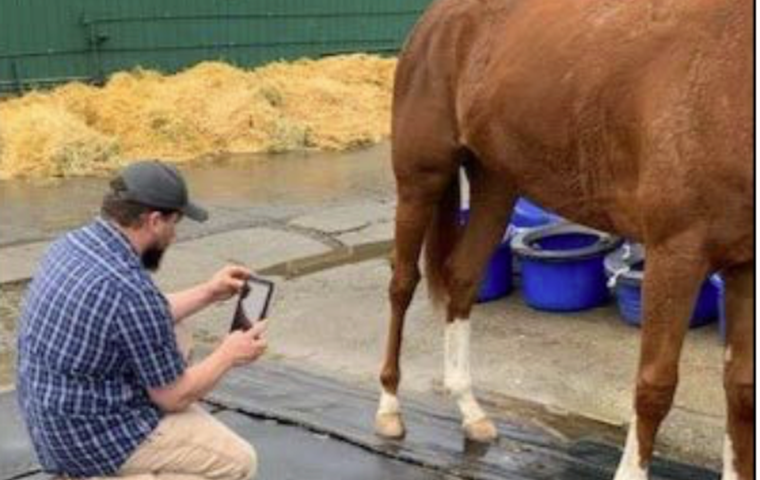
With the introduction of a digital tattoo system now less than four months away, America's Thoroughbred Racing Protective Bureau (TRPB) has announced that it has conducted technician training in 25 states and five Canadian provinces, and that more than 900 Thoroughbreds have already received their digital tattoos.
The new system is scheduled for full implementation by January 1.
“Effective January 1st, 2020, all Thoroughbred horses that have not previously been TRPB lip tattooed must have a Digital Tattoo for race-day identification,” said J. Curtis Linnell, Executive Vice President of the TRPB. “This Digital Tattoo indicates that the Thoroughbred Racing Protective Bureau has confirmed the identity of the horse and uploaded updated digital photographs to the breed registry database at the Jockey Club.”
The TRPB provides authentication of identity for every Thoroughbred racing jurisdiction in the United States and Canada.
The transition to the TRPB Digital Tattoo was preceded by a requirement by the Jockey Club calling for any Thoroughbred foaled in 2017 or after to be microchipped prior to being registered.
In essence, the digital tattoo is an electronic validation of the identity of a horse performed by a TRPB technician. The technician uses a scanner to read the horse’s microchip and that microchip number hyperlinks to electronic registration information consisting of high-resolution digital photos of the horse and its markings.
The Association of Racing Commissioners International (ARCI) passed a model rule regarding digital tattoos. The model rule states, effective January 1, 2020, the racing secretary shall ensure that the registration certificates for all Thoroughbred horses that were foaled in 2017 or thereafter have a digital tattoo prior to entry in a race.
Linnell stressed the importance of regulatory commissions and racing associations being familiar with the impending change.
“With racing commissions, we want to make sure that they have rules in place that specifically reference the Digital Tattoo for identification to avoid scratching horses from a race come January 1,” he said. “As for racing associations, we are encouraging all of them to make sure racing office personnel understand the digital tattoo certification and are planning and preparing to incorporate digital tattoos for horse identification.”
Linnell said the current practice of branding horses on the inside lip will be discontinued at the end of 2019.
He also said that the new system has received encouraging responses when TRPB personnel and TRPB technicians have met with racing officials, regulators, horse identification employees and other industry officials over the course of the past two years.
“For the most part, they seem excited about Digital Tattoos,” he said. “They realize it will provide a more efficient and effective system of identification.”
The technician training has been held in: Arizona, Arkansas, California, Delaware, Florida, Illinois, Indiana, Iowa, Kentucky, Louisiana, Maryland, Minnesota, Nebraska, New Jersey, New Mexico, New York, Ohio, Oklahoma, Pennsylvania, Texas, Utah, Virginia, Washington, West Virginia and Wyoming. The training has also been conducted in Alberta, British Columbia, Manitoba, Ontario and Saskatchewan.
The TRPB, based in Fair Hill, Maryland, is a wholly owned subsidiary of the Thoroughbred Racing Associations of North America and serves as a national investigative agency in the horse racing industry with the goal of maintaining public confidence in the sport of Thoroughbred racing.


